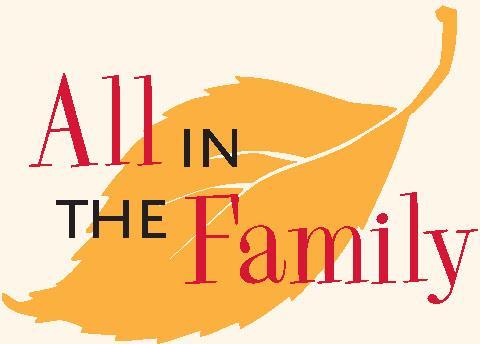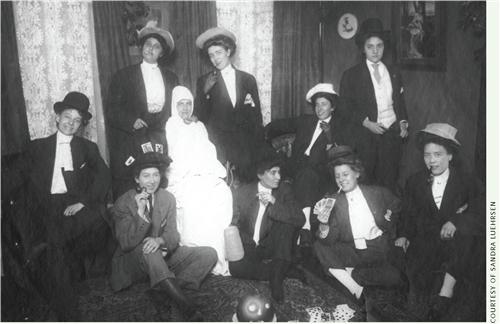Sign up for the Family Tree Newsletter Plus, you’ll receive our 10 Essential Genealogy Research Forms PDF as a special thank you!
Get Your Free Genealogy Forms
"*" indicates required fields
Cousin Connection
When I received the invitation to my 50th high school class reunion, I decided to make reservations at the relatively new bed and breakfast near my alma mater. The owner, Lew, was in my sister’s class, but I’d never met him.
In the foyer, I spotted a collage of pictures with people identified by my maiden name, Gillin, but I didn’t recognize them. There were a few snapshots of a building “built by John Gillin and his son, John Jr., between 1832 and 1834.” As it was a stone structure, I knew these had to by my ancestors — stonemasons. A stone house captioned as “the home of one of the John Gillins” was pictured, too.
After introducing myself to Lew and chatting awhile, I said I was surprised to see a picture of my great-great-grandfather’s house (an assumption, I know) on the wall. Lew replied, “He’s mine, too.”
Lew enlightened me that I was standing in the structure the John Gillins built. His grandmother was an avid genealogist, so he’d inherited our mutual ancestor’s pearl-handled walking stick and a few other heirlooms.
Later I learned that Lew’s great-great-grandmother and my great-grandfather were children of the Irish patriarch John Gillin Sr., and that John, his wife, Frances, and two sons were buried two blocks from the bed and breakfast.
Lew’s grandmother wrote in a one-page family history that three children were born in Ireland, one during the voyage to Canada and three after reaching their new home. “What happened to the rest of the children?” I wondered. That began my genealogy quest.
Wanda Barrett
Bedford, Pa.
Love and War
After the Battle of Gettysburg in 1864, a young Union soldier named Robert Lowe was going home to visit his father in Frederick, Md. With no horse, he had to walk the entire distance. On the way, he came to the town of Sabillasville, Md., where he stopped at a general store to ask directions. While he was inside, a young boy came running in yelling, “Some Rebel soldiers are coming up the road!”
The storekeeper, Mr. Arnsparger, knew a lone Union soldier, if found, would be in great danger. After the “Gettysburg fight,” as it was called, the Southern troops were tired, discouraged and angry. Mr. Arnsparger told Robert to hide in the woodshed up the mountain behind his property. For several days, Confederate troops passed through the town. The storekeeper’s 22-year-old daughter, Jennie, and her brothers took food and water to Robert in the shed.
Through it all, Robert and Jennie must have fallen in love. When it was safe to leave, he told Jennie he would return for her. One year later, in July, he came back and married his dear Jennie. Robert and Jennie Lowe had a long and happy life together. They were my great-grandparents.
Jan Lowe Beurket
Alexandria, Va.
Key to the Past
The key to the Ranger Museum is at the hardware store next door. You’ll know this when you walk up to the door and see a small padlock. A sign on the door directs you to cross the street and ask at the hardware store counter for a key. It’s a little unbelievable at first, but when you do ask, they aren’t surprised and willingly hand over the key.
Ranger, Texas, is on a strip of interstate between Abilene and Dallas. I remember my grandfather Howard Dunaway talking about Ranger, where he spent his late childhood and early teen years. His father was a prominent lawyer at the time, and I always got the sense Ranger was Howard’s place to come of age.
Today the town is in decline, and I could barely see the vibrant place my grandfather had spoken so highly of. Nevertheless, Ranger was my favorite stop on the genealogy tour my mother and I had embarked upon. I was finally getting a glimpse of my hero’s hometown. So that’s where we found ourselves one August day, searching for some remnant of Howard.
To my initial disappointment, we didn’t find much. The large, old museum, like the Ranger itself, was almost ghostlike. I saw Howard’s name on a list of high school alumni — the only proof he’d ever been there. I expected to see so much more of him, probably because he was always larger than life: Everyone respected his humor, his knowledge, and how he thought carefully about everyone and everything. He left his mark. But not on Ranger — instead, this little town had left its mark on him.
Jodi Bash
Houston
Halloween Hijinks
I inherited photographs belonging to my great-aunt Annette “Nettye” V. Luehr-sen upon her death at 100 years old in 1982. This one is a favorite. In this circa 1905 Halloween photograph, the young women parody men of the day. Annette stands to the right of the ghost, holding a pipe. I believe her younger sister, Marie “Mousie” Luehrsen (1888 1953), sits at the bottom far right.
Both Nettye and Mousie were career women to the extent it was possible at that time: Annette worked as a bookkeeper for a sewing machine business (probably her father’s); Marie was a cashier at a wholesale drug company. Although Annette had a steady beau for many years, she never married. Neither did Marie.
Tempe, Ariz.

July Winner: Gee, Thanks …
You know that fantasy where a long-lost great-uncle kicks the bucket and leaves you a fortune in stock options? That’s not what happened with the two last will and testament excerpts printed here. But the readers who entered them win a wealth of genealogy research advice in our State Research Guides CD.
Jarrod W. Van Kirk of Ypsilanti, Mich., sent this passage from a 1920s-era will:
Seventh: I give, devise and bequeath unto my trustee herein-after named, the sum of $10,000, in trust nevertheless, for the following uses and purposes: To Invest and keep the sum invested according to the law, and to use the net income therefrom for the maintenance and up-keep of my pet monkey called ‘Poppy Squeak’ which now and during my absences from Cleveland, is boarded with Dr. Considine.
The will of Chinn Kingcade, written April 29, 1881, in Hardin County, Ky, was sent by his great-great-granddaughter Ann C. Kincaid Nunes of Los Banos, Calif.:
To my dear grand daughter Hallie A. Kingcade I do will and bequeath the bed that she claims and is considered hers by my family. I also will and bequeath to the same Hallie A. Kingcade my read roan cow George.
From the November 2008 Family Tree Magazine
ADVERTISEMENT


